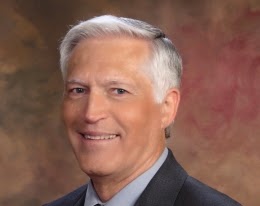On the second day of the reunion, we toured the new high school, built after a fire destroyed part of the old school. What a campus it is. Occupying 14 or 15 blocks, it looks more like a college than a high school. The design of the school was well thought out. The facilities—from computer labs, to the performing arts theater, to the athletic training facility—were all first class. Better than many colleges and universities.
Though it was July, there were a few students walking through the beautiful campus. Most had their faces turned down, peering into the display of some gadget they held in their hands, while thumbs or fingers pressed or poked at a furious pace. What were these students actually doing? Communicating? I don’t think so. They were sending information via a mechanism slightly better than Morse Code. Missing from what they sent were the facial expressions, body language, and vocal expression that were part of communication when my class attended the school. This subject came up at our class dinner that evening. There was a consensus, and that consensus, not the negatives, is what I want to emphasize with this post.
If you were born in 1946, whether or not you are from Oklahoma, you are a Boomer Sooner, a person born at, or slightly before, the cusp of the baby boom. And our generation was blessed in many ways. We had no joysticks or game controllers. Rather, using our collective imaginations and face-to-face social interaction, we created our own live games, not video simulations. For the guys, what could be more fun than dividing up the neighborhood kids into two armies, negotiating the ground rules for our battle, and then playing our individual roles, which required running, jumping, hiding, until one side prevailed. And, if your side lost, you still got the satisfaction of acting out a dramatic death, leaving the game in a blaze of theatrical glory.
 My best buddy, his sister, and I tore apart some old radios and, from carefully selected components, built the control panel of a spaceship in the attic of an old shed. From that attic we traveled the galaxies, exploring, fighting against evil forces, sometimes getting captured, but always knowing that right would prevail in the end. We did this in the mid-fifties, long before Star Trek or Star Wars. And our communication was always face-to-face. We talked. We touched. Sometimes we argued, but we resolved disagreements quickly because it’s really hard to flame someone when you’re staring them in the face, much harder than when you view them as nothing more than a producer of irritating text coming from a vaguely familiar username on some web site.
My best buddy, his sister, and I tore apart some old radios and, from carefully selected components, built the control panel of a spaceship in the attic of an old shed. From that attic we traveled the galaxies, exploring, fighting against evil forces, sometimes getting captured, but always knowing that right would prevail in the end. We did this in the mid-fifties, long before Star Trek or Star Wars. And our communication was always face-to-face. We talked. We touched. Sometimes we argued, but we resolved disagreements quickly because it’s really hard to flame someone when you’re staring them in the face, much harder than when you view them as nothing more than a producer of irritating text coming from a vaguely familiar username on some web site.Our play and our communication was more fun, more full of imagination, and certainly healthier, than what most kids experience today. Is there a way to capture a clear picture of our childhood and then show it to our grandchildren, or our grandnephews and nieces, so they understand what they’re missing?
If you have some ideas, I’d love to hear them, because I have 7 grandchildren who could sure use a glimpse of what I had as a child and what you probably had too.
 H L (Harry) Wegley served in the military as a USAF Intelligence Analyst and a Weather Officer. In civilian life, he performed weather research, publishing in the scientific literature. After earning an advanced Computer-Science degree, he developed computing systems for 20+ years, then he and his wife retired near Seattle, where he writes inspirational thrillers. He has a contracted, 4-book, Christian-thriller series with Pelican Book Group. The 4th book releases in November 2014. He is currently working on his 8th novel.
H L (Harry) Wegley served in the military as a USAF Intelligence Analyst and a Weather Officer. In civilian life, he performed weather research, publishing in the scientific literature. After earning an advanced Computer-Science degree, he developed computing systems for 20+ years, then he and his wife retired near Seattle, where he writes inspirational thrillers. He has a contracted, 4-book, Christian-thriller series with Pelican Book Group. The 4th book releases in November 2014. He is currently working on his 8th novel.Connect with H L:
Web Site & Blog
Facebook Profile
Facebook Author Page
Goodreads



